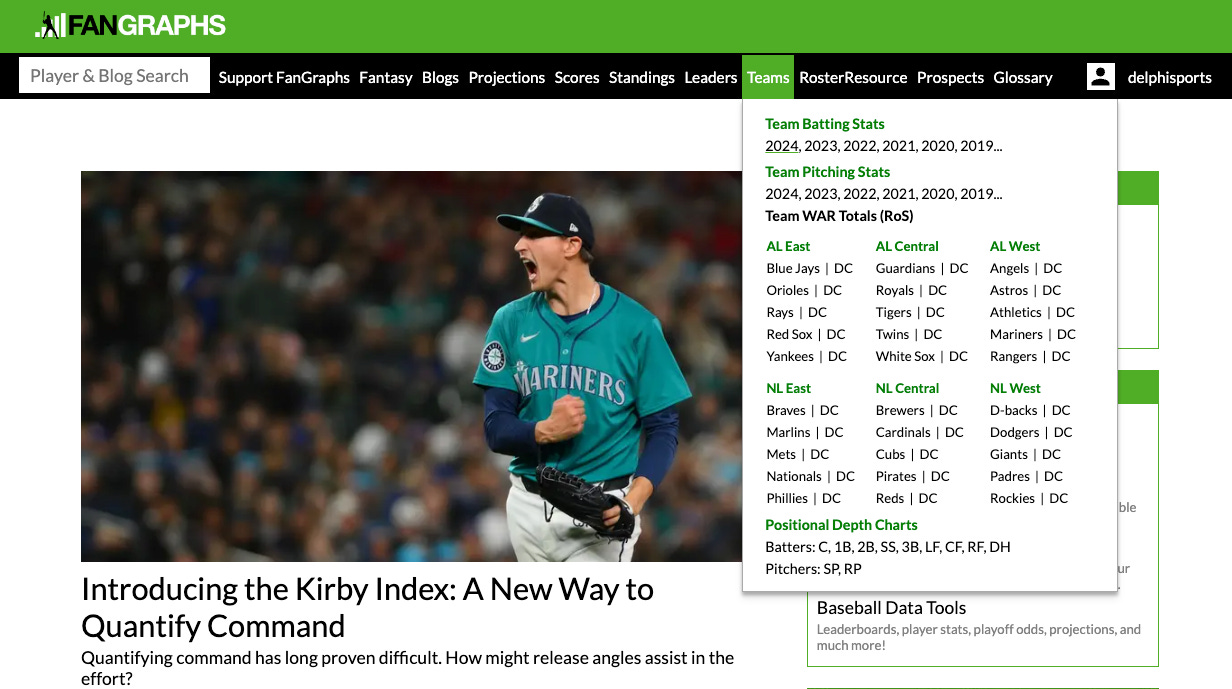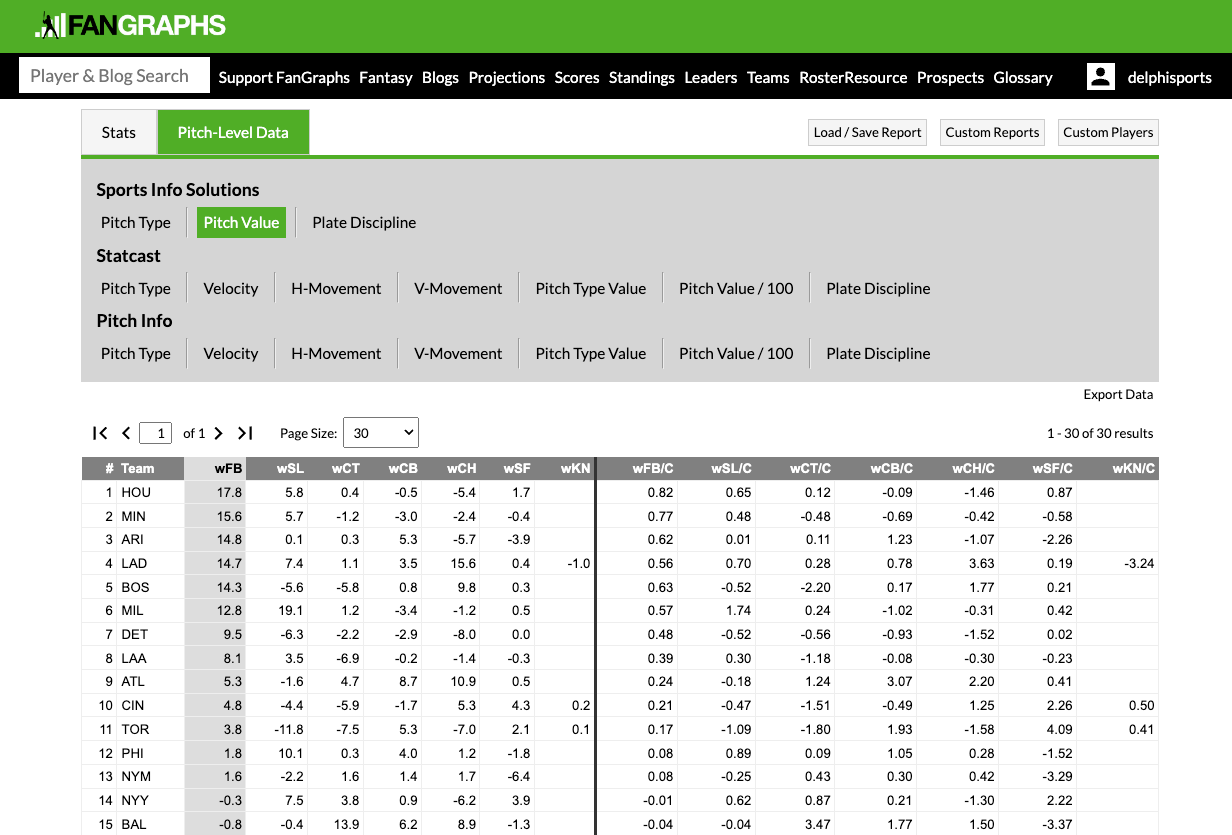How to find batting statistics against specific pitch types
The Commish shares resources for finding batting statistics against specific pitch types.
Earlier this week,
asked me the following question in a comment on one of my posts. This article is a breakdown of how to find batting statistics against specific pitch types — also referred to as “arsenal stats” or “pitch value,” depending on the context.“Hey commish great write up on finding bullpen usage. I have a question on how to find team batting success vs specific pitch types.”
Pitch Arsenal Statistics - Baseball Savant
Navigate to the “Leaderboards” tab
Click on “Pitch Arsenal Stats” under the “Batting” section
The default “Pitch Arsenal Stats Leaderboard” will include statistics against all pitch types for players with at least 10 plate appearances. You can adjust for specific pitch types or only players from a specific team by using the dropdown menu — make sure you hit “Update” after selecting new filters.
If looking to see how the Dodgers’ hitters have performed against 4-seam fastballs in 2024, the dropdown menu should have selected — “4-Seam Fastball” and “Dodgers.” From here, you can sort by Run Value, xwOBA (my personal preference), or other relevant metrics. If using this data for strikeout props, for example, it would be better to sort the table by “Whiff%.”
Pitch Value Statistics - FanGraphs
Navigate to the “Teams” tab
Click on “2024” under “Team Batting Stats”
The default landing page will take you to the “Dashboard” — this includes standards statistics, such as G, PA, HR, R, RBI, SB, and so forth.
To find team batting statistics against specific pitch types, click on “Pitch-Level Data.” This will change your filter options.
From here, select “Pitch Value.” This will allow you to see how each team has performed against individual pitch types. You can hover over the column label to make sure you are looking at the correct pitch type. For example, hovering over “wFB” which prompt a text box to appear, which says “Fastball runs above average.”
The most useful way to examine this data is likely on a “per 100 pitches basis.”














